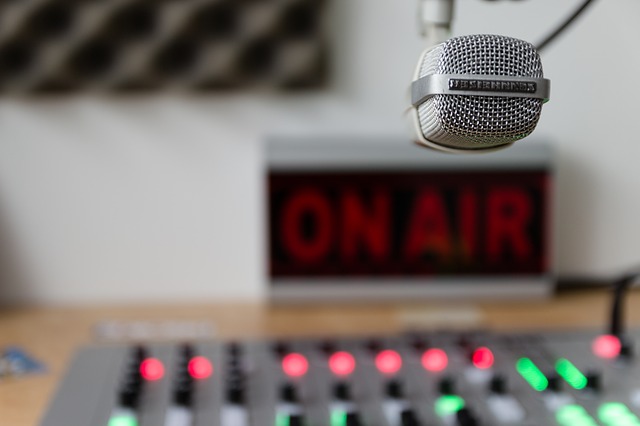To start mixing your own music, invest in quality headphones and a Digital Audio Workstation (DAW). Experiment, practice, and seek feedback to improve your skills.
Mixing takes time and dedication, but with practice and patience, you can create professional-sounding tracks. Whether you’re a beginner or seasoned musician, mixing your own music allows you full creative control over your sound. With the right tools and knowledge, you can enhance the quality of your music and bring your unique artistic vision to life.
Mixing your own music is a rewarding process that can lead to growth as an artist and a deeper connection to your music.

Credit: www.amazon.com
Choosing Your Daw
Researching Available Digital Audio Workstations
To get started, research available DAWs to find one that suits your needs.
Evaluating Features And Compatibility
Check features and make sure the DAW is compatible with your operating system.

Credit: www.airtime.pro
Setting Up Your Studio
When it comes to mixing your own music, setting up your studio is crucial. Selecting the right equipment and optimizing your workspace can make a significant difference.
Selecting The Right Equipment
Choose a reliable audio interface, studio monitors, and a quality microphone. Prioritize high-quality headphones and a powerful computer.
Optimizing Your Workspace
- Place your desk in the center of the room for balanced acoustics.
- Invest in acoustic treatment like sound panels and bass traps for better sound quality.
- Ensure proper cable management to avoid clutter and interference.
A dedicated studio chair and proper lighting are essential for long hours of productive work.
Understanding Basic Mixing Concepts
Explore the fundamental aspects of mixing music to kickstart your music production journey. Learn basic mixing concepts and techniques to enhance the sound quality of your tracks effectively. Master the art of balancing different audio elements to create professional-sounding music compositions.
Understanding basic mixing concepts is crucial for anyone looking to start mixing their own music. Whether you’re a beginner or an experienced musician, grasping essential concepts is vital to achieve a well-balanced and professional sound. In this section, we will delve into two fundamental elements of mixing: balancing levels and panning and exploring EQ and dynamics. Understanding these concepts will set a solid foundation for your journey into mixing music.
Balancing Levels And Panning
When it comes to balancing levels, it’s important to ensure that no single instrument or sound overpowers the others. A balance should be struck to ensure that each element can be heard clearly within the mix. Panning, on the other hand, refers to the placement of individual sounds within the stereo field. This can create a sense of space and depth within the mix, making it more engaging for the listener.
Exploring Eq And Dynamics
EQ (equalization) is a vital tool in mixing that allows you to adjust the frequency balance of individual tracks. This involves cutting or boosting specific frequencies to enhance the overall clarity and tonal balance of the mix. Dynamics, on the other hand, involve controlling the volume levels of individual tracks over time. This can include using techniques such as compression to ensure that the dynamic range of the mix is controlled and consistent. Understanding these basic concepts will lay a solid foundation for your journey into mixing music, allowing you to create professional-sounding mixes that captivate your audience.
Importing And Organizing Your Tracks
When it comes to mixing your own music, importing and organizing your tracks is a crucial first step in the process. It sets the foundation for an efficient and seamless mixing workflow, allowing you to focus on the creative aspects of your music.
Preparing Audio Files For Mixing
Before diving into the mixing process, it’s important to ensure that your audio files are well-prepared. This involves checking for any potential issues such as clipping, background noise, or inconsistent levels. By addressing these issues beforehand, you can prevent them from affecting the overall quality of your mix.
Creating An Efficient Session Layout
An organized session layout can greatly enhance your mixing experience. By naming and color-coding your tracks according to their respective instruments or vocal parts, you can easily navigate through your session and make adjustments with precision. Moreover, arranging your tracks in a logical order based on the song structure can streamline the mixing process and improve your overall efficiency.
Starting Your Mix
When you first dive into the world of mixing your own music, it can be overwhelming. But fear not! Follow these steps to get your mix off to a great start.
Setting Initial Levels And Panning
Before you dive into applying effects and making adjustments, it’s essential to set your initial levels and panning. This will create a solid foundation for your mix and help you achieve clarity and balance in your sound.
- Begin by setting the volume levels for each track in your project. This can be done by adjusting the faders or virtual volume knobs in your software.
- Listen to each track individually and make sure it sits comfortably in the mix. Adjust the volume accordingly to achieve a balanced sound.
- Once the levels are set, it’s time to think about panning. Panning refers to the placement of instruments and sounds in the stereo field.
- Experiment with panning different tracks to different positions—try placing some sounds more to the left or right to create a sense of space and depth.
- Remember, the goal is not to pan everything hard left or right, but rather to create a balanced and cohesive mix where each element has its own space.
Applying Basic Eq And Compression
After you’ve set your initial levels and panning, it’s time to dive into the world of EQ and compression, two fundamental tools for shaping the sound of your mix.
- Start by applying basic EQ to each track. An EQ allows you to boost or cut certain frequencies, which can help you enhance the presence or remove unwanted elements from your mix.
- Listen carefully to each track and identify any frequency imbalances or problematic elements. Use the EQ to make adjustments until you achieve a pleasing and balanced sound.
- Next, move on to compression. Compression helps control the dynamic range of your tracks, ensuring that quieter elements are brought up and louder elements are tamed.
- Apply gentle compression to each track, adjusting the threshold, ratio, attack, and release settings to achieve the desired effect. This will help create a more consistent and polished sound in your mix.
- Remember to use compression sparingly and always trust your ears. The goal is to achieve a natural and transparent compression that enhances the overall mix.
By setting your initial levels and panning, as well as applying basic EQ and compression, you’re off to a great start in mixing your own music. Stay tuned for more tips and techniques to take your mixes to the next level!

Credit: news.miami.edu
Frequently Asked Questions Of How To Start Mixing Your Own Music
What Do I Need To Start Mixing Music?
To start mixing music, you need a computer, audio software like Ableton or Logic Pro, headphones, and a midi controller.
How Do I Mix My Own Music?
To mix your own music, use a digital audio workstation (DAW) to arrange and adjust tracks. Adjust volumes, panning, and effects. Pay attention to EQ, compression, and reverb. Experiment and listen critically. Practice and seek feedback for improvement.
Is It Hard To Mix Music?
Mixing music can be challenging, but with some practice and knowledge of audio engineering techniques, it becomes easier. Attention to detail, understanding of different tracks, and using the right tools are key to achieving a professional mix.
What Do I Need To Know Before Mixing Music?
Before mixing music, you should keep these 5 things in mind: 1. Be concise and limit sentences to 20 words. 2. Write in an SEO friendly and unique style without plagiarism. 3. Avoid certain phrases and passive voice. 4. Maintain a human-like writing style that passes AI detection.
5. Answer within 50 words.
Conclusion
Mixing your own music is an exciting journey. With the right tools and techniques, you can create professional-sounding tracks from the comfort of your own home. Whether you’re a beginner or experienced musician, taking the time to experiment and learn is key to honing your skills.
Embrace the process and have fun as you bring your musical visions to life.